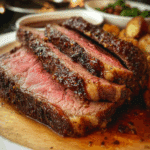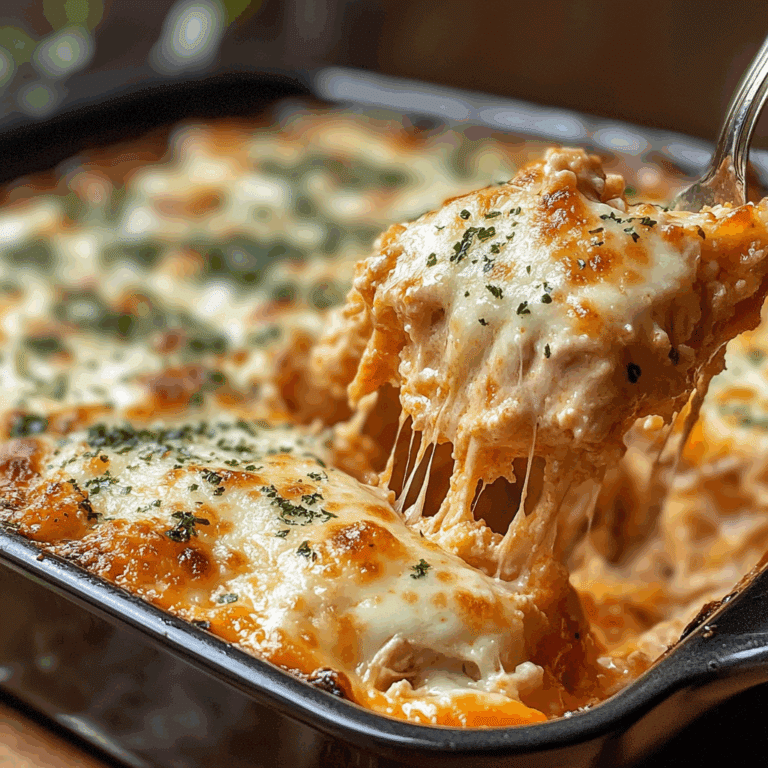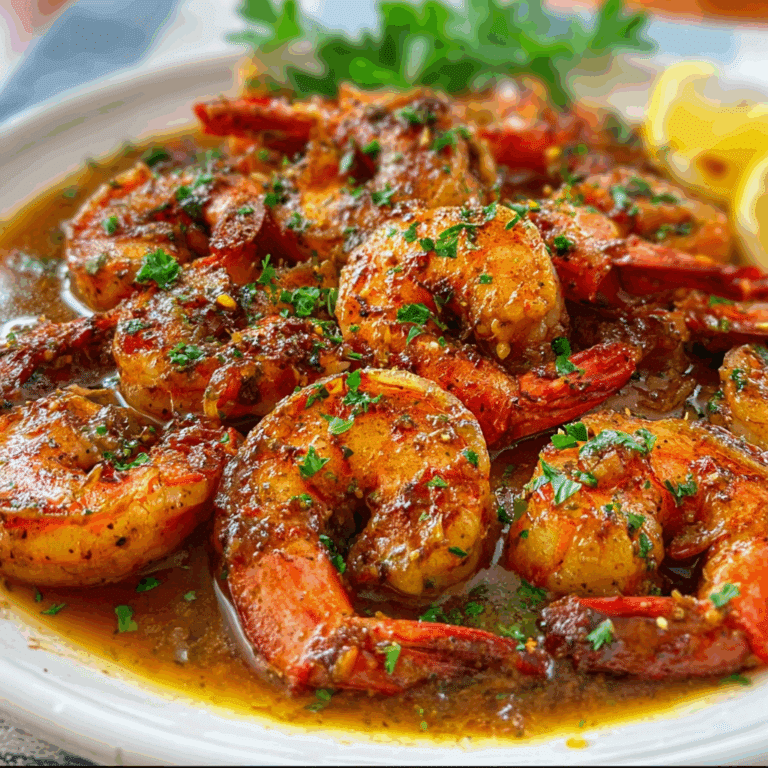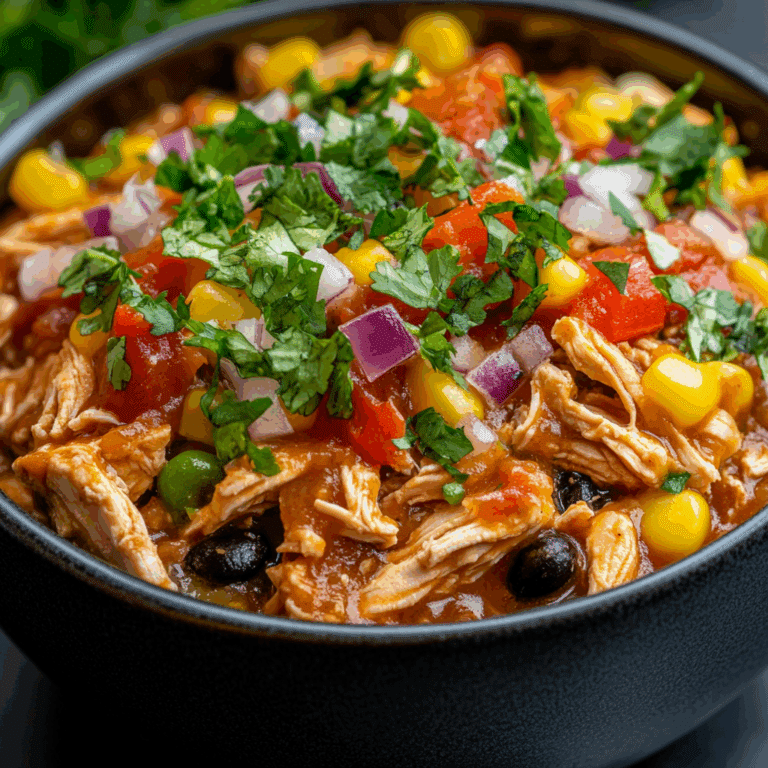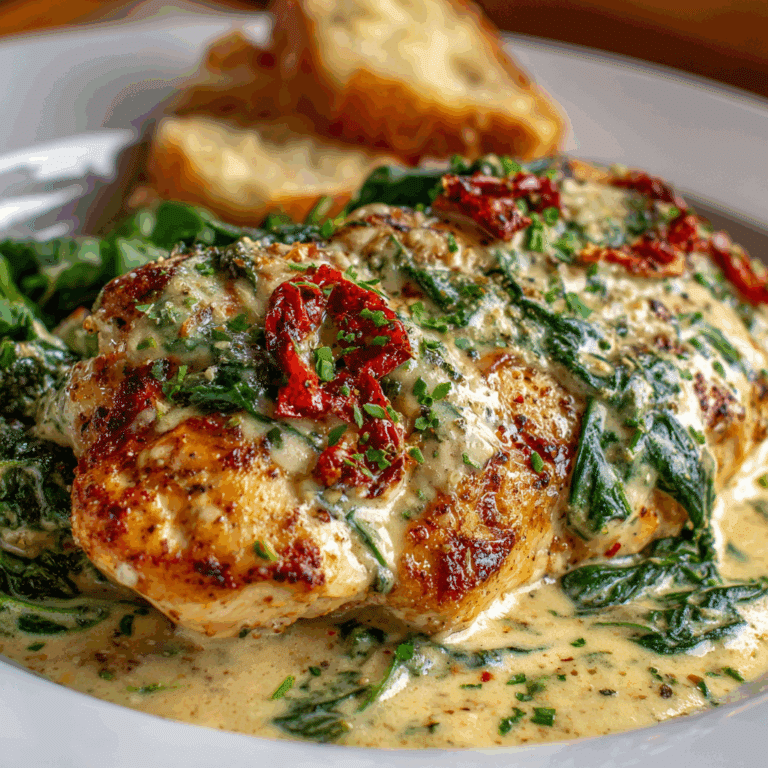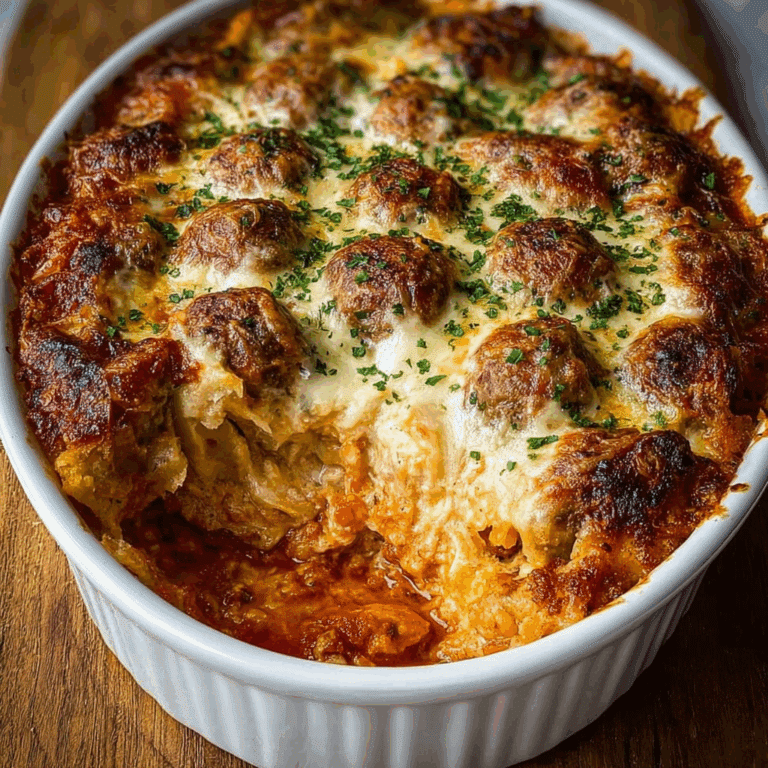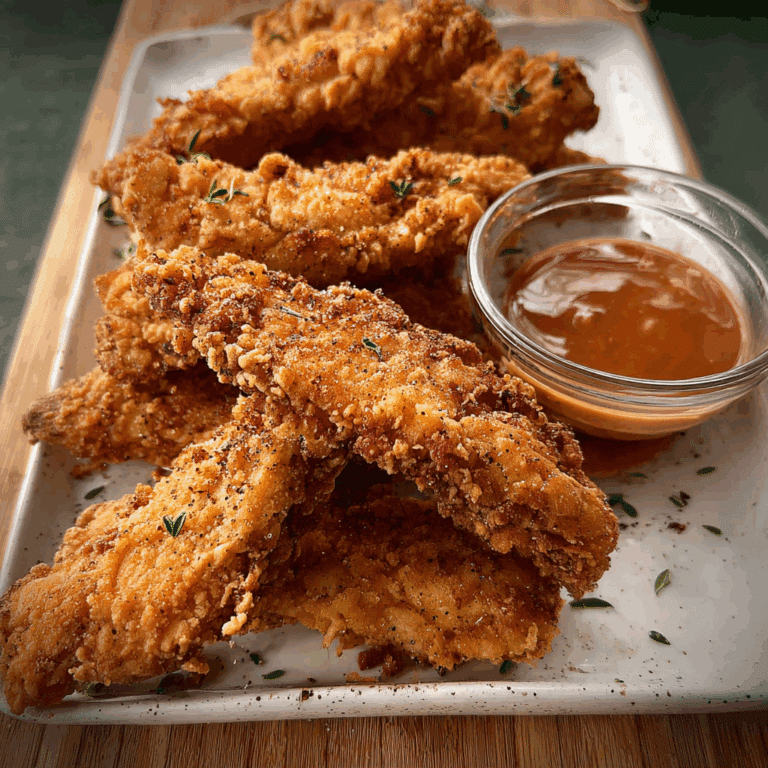How to Make Poor Man’s Prime Rib at Home
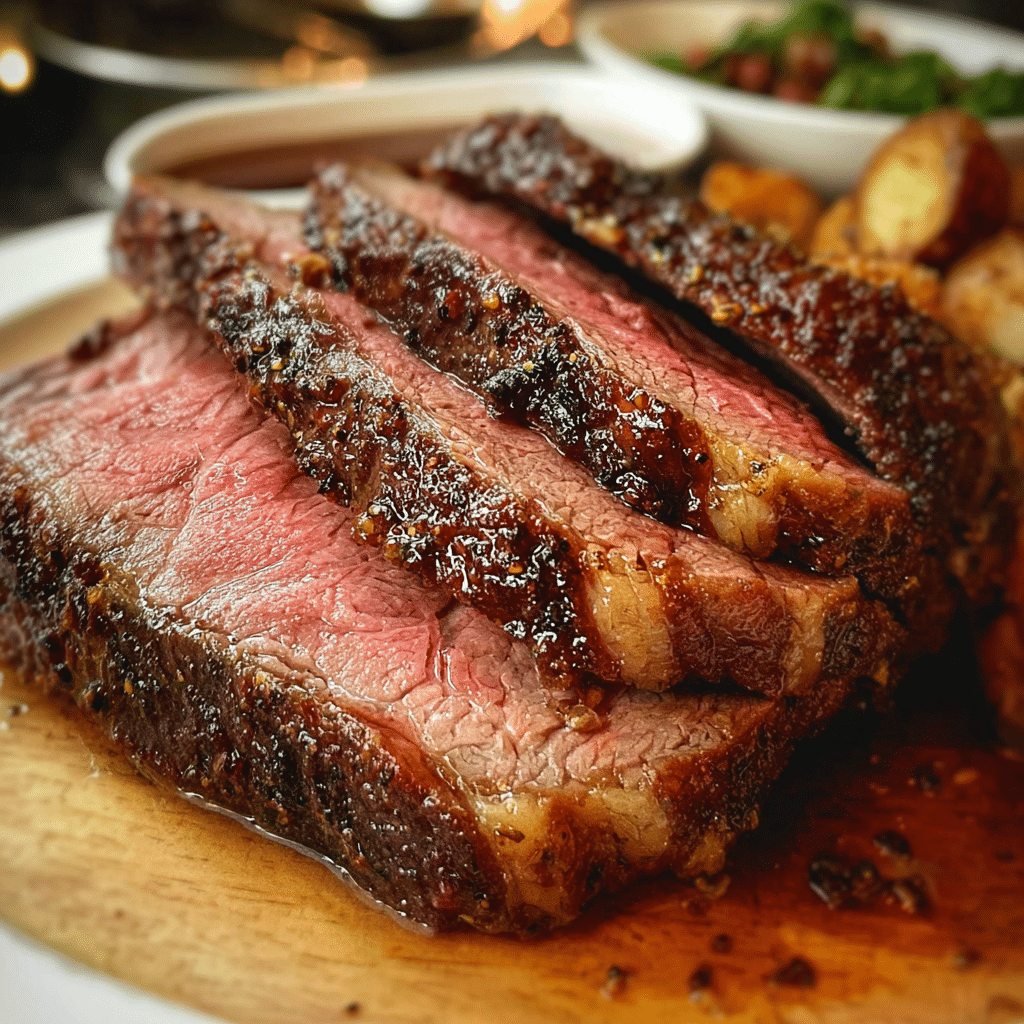
If you’re craving a rich, savory roast but want to keep things affordable, this Poor Man’s Prime Rib recipe is your new best friend. It captures all the juicy, flavorful goodness of a traditional prime rib without breaking the bank. Perfectly seasoned and tender, this dish offers a crowd-pleasing centerpiece for any feast at home. You’ll love how easy and budget-friendly it is to create a succulent Poor Man’s Prime Rib that tastes like a gourmet indulgence every time.
Why You’ll Love This Recipe
- Budget-Friendly Enjoyment: Uses affordable cuts while delivering prime rib-like taste and tenderness.
- Simple Ingredients: Requires pantry staples and minimal prep for a fuss-free cooking experience.
- Juicy and Flavorful: Expert seasoning and cooking techniques lock in maximum succulence and aroma.
- Versatile Meal Option: Perfect for family dinners, holiday celebrations, and weekend gatherings.
- Impress Your Guests: Looks and tastes like a high-end dish without the expensive price tag.
Ingredients You’ll Need
Although this recipe keeps costs down, every ingredient plays an essential role in creating a moist, delicious Poor Man’s Prime Rib. Each component enhances flavor complexity, and together they develop a beautiful crust and tender interior.
- Chuck Roast or Ribeye Roast: Affordable cut that mimics prime rib texture when cooked low and slow.
- Garlic Cloves: Fresh garlic infuses the roast with aromatic depth and savory notes.
- Olive Oil: Helps to create a golden, crispy crust and locks in moisture.
- Salt and Pepper: Essential seasonings that bring out the meat’s natural flavors perfectly.
- Fresh Rosemary or Thyme: Adds herbal brightness and complements the richness of the beef.
- Beef Broth or Stock: Introduces moisture during roasting for juicier results and a savory pan sauce base.
- Onion Powder and Paprika: Boosts the roast’s smoky, mildly sweet undertones.
Variations for Poor Man’s Prime Rib
Feel free to make this recipe your own by adjusting ingredients or techniques. Whether you want a spicier version or a different herb profile, Poor Man’s Prime Rib is easy to customize to your tastes or dietary needs.
- Spicy Kick: Add cayenne pepper or crushed red pepper flakes to the seasoning rub for added heat.
- Herb Twist: Swap rosemary for fresh oregano or marjoram to change the herbal notes.
- Gluten-Free Option: Use gluten-free beef broth and double-check seasonings for gluten content.
- Smoky Flavor: Lightly smoke the roast before finishing in the oven for a BBQ-inspired taste.
- Vegetarian-Friendly Sides: Pair with hearty mushroom gravy instead of beef broth for a twist.

How to Make Poor Man’s Prime Rib
Step 1: Preparing the Roast
Pat your chuck or ribeye roast dry with paper towels to ensure a great sear. Rub the olive oil all over the surface, then generously season with salt, pepper, garlic, onion powder, and paprika. Don’t forget to tuck in fresh rosemary or thyme sprigs for aroma.
Step 2: Searing for Flavor
Heat a heavy skillet over medium-high heat and sear the roast on all sides until it develops a rich, brown crust. This step locks in juices and builds the deep flavor base that defines a good Poor Man’s Prime Rib.
Step 3: Roasting Low and Slow
Transfer the seared roast to a roasting pan, pour in beef broth to keep it moist, and roast in a preheated oven at 275°F (135°C). Use a meat thermometer to cook until the internal temperature reaches 130°F (54°C) for medium-rare or your preferred doneness.
Step 4: Resting the Meat
Once out of the oven, let the roast rest covered loosely with foil for 15-20 minutes. This allows juices to redistribute, yielding a juicy, tender slice every time.
Step 5: Slicing and Serving
Slice the roast against the grain to maximize tenderness and serve immediately with your favorite sides or pan sauce.
Pro Tips for Making Poor Man’s Prime Rib
- Use a Meat Thermometer: Avoid guessing—monitor to achieve your desired doneness perfectly.
- Rest Before Slicing: Essential for juicy results by letting the meat’s fibers relax and redistribute juices.
- Don’t Skimp on Seasoning: A well-seasoned crust dramatically enhances flavor and texture.
- Choose the Right Cut: Chuck roast is budget-friendly, but ribeye roast upgrades the texture closer to traditional prime rib.
- Low and Slow Cooking: Keeps the meat tender and juicy rather than drying out from high heat.
How to Serve Poor Man’s Prime Rib
Garnishes
Fresh herbs like rosemary sprigs or parsley add color and aroma, while a drizzle of horseradish sauce or mustard brings tangy brightness that complements the juicy beef.
Side Dishes
This Poor Man’s Prime Rib pairs wonderfully with creamy mashed potatoes, roasted seasonal vegetables, and a crisp green salad to balance richness.
Creative Ways to Present
For a stunning presentation, serve slices fan-shaped on a wooden board with small bowls of au jus and horseradish sauce. Garnish with caramelized onions or crispy shallots for texture contrast.
Make Ahead and Storage
Storing Leftovers
Wrap cooled leftover Poor Man’s Prime Rib tightly in foil or plastic wrap and store in the refrigerator for up to 3 days to maintain moisture and flavor.
Freezing
Slice the roast before freezing in airtight containers or vacuum-sealed bags; frozen Poor Man’s Prime Rib stays delicious for up to 3 months.
Reheating
Warm leftovers gently in a low oven or covered skillet over medium heat with a splash of beef broth to prevent drying out and preserve tenderness.
FAQs
What cut of meat is best for Poor Man’s Prime Rib?
Chuck roast is a popular choice for its affordability and texture, but a ribeye roast offers a closer experience to traditional prime rib with a bit more marbling.
Can I cook Poor Man’s Prime Rib in a slow cooker?
Yes, slow cooking is a great alternative method that can yield incredibly tender results, though it won’t produce the crispy crust you get from roasting.
How long should I let the roast rest?
Resting for at least 15-20 minutes after roasting is crucial so the juices redistribute and the meat stays juicy when sliced.
Is this recipe suitable for holiday meals?
Absolutely! Poor Man’s Prime Rib makes an impressive, wallet-friendly centerpiece for festive occasions and family gatherings alike.
Can I prepare this recipe ahead of time?
Yes, you can prepare the seasoning and sear the roast the day before, then simply roast and serve when ready to save time.
Final Thoughts
Creating a delicious and tender Poor Man’s Prime Rib at home is easier than you think, and it’s a fantastic way to treat yourself and your guests without splurging. With simple ingredients and a few smart techniques, you get a juicy, flavorful roast packed with all the rich taste of traditional prime rib. So go ahead, give this recipe a try and bring that comforting, gourmet touch right to your dinner table!
Related Posts
- Easy Chicken Breasts Stuffed With Ham and Cheese Recipe
- Why The Best Baked Beans Are a Must-Try
- Easy and Delicious Ranch-Parmesan Chicken Recipe
Poor Man’s Prime Rib
Poor Man’s Prime Rib is a budget-friendly roast that mimics the rich, juicy, and tender qualities of traditional prime rib. Using affordable cuts like chuck or ribeye roast, combined with simple pantry ingredients and expert seasoning, this recipe delivers a flavorful, succulent centerpiece perfect for family dinners, holiday meals, or special occasions. With a low and slow roasting method and easy preparation, it’s an indulgent yet economical way to enjoy gourmet-style beef at home.
- Prep Time: 15 minutes
- Cook Time: 2 to 2.5 hours
- Total Time: 2 hours 30 minutes to 2 hours 45 minutes
- Yield: 6-8 servings 1x
- Category: Main Course
- Method: Roasting
- Cuisine: American
- Diet: Gluten Free
Ingredients
Main Ingredients
- 3–4 lb chuck roast or ribeye roast
- 4–5 garlic cloves, smashed or minced
- 2 tbsp olive oil
- 2 tsp salt
- 1 tsp black pepper
- 1 tsp onion powder
- 1 tsp paprika
- 2–3 sprigs fresh rosemary or thyme
- 1 cup beef broth or stock
Instructions
- Preparing the Roast: Pat your chuck or ribeye roast dry with paper towels to ensure a great sear. Rub olive oil all over the surface, then generously season with salt, pepper, garlic, onion powder, and paprika. Tuck in fresh rosemary or thyme sprigs for added aroma.
- Searing for Flavor: Heat a heavy skillet over medium-high heat and sear the roast on all sides until it develops a rich, brown crust. This step locks in juices and builds a deep flavor base essential to Poor Man’s Prime Rib.
- Roasting Low and Slow: Transfer the seared roast to a roasting pan, pour in the beef broth to maintain moisture, and roast in a preheated oven at 275°F (135°C). Use a meat thermometer to cook until the internal temperature reaches 130°F (54°C) for medium-rare, or adjust for your preferred doneness.
- Resting the Meat: Remove the roast from the oven and let it rest loosely covered with foil for 15-20 minutes. This resting period allows juices to redistribute, resulting in a juicier and more tender slice.
- Slicing and Serving: Slice the roast against the grain to maximize tenderness and serve immediately alongside your favorite sides or with pan sauce.
Notes
- Use a meat thermometer to monitor the roast’s internal temperature for perfect doneness.
- Resting before slicing is crucial to keep the meat juicy and tender.
- Do not skimp on seasoning; a well-seasoned crust enhances both flavor and texture.
- Choose chuck roast for budget-friendly cooking or ribeye roast for a more premium texture close to traditional prime rib.
- Cook low and slow to maintain tenderness and juiciness instead of drying out the meat.
Nutrition
- Serving Size: 4 oz cooked
- Calories: 350
- Sugar: 0 g
- Sodium: 450 mg
- Fat: 25 g
- Saturated Fat: 10 g
- Unsaturated Fat: 13 g
- Trans Fat: 0.5 g
- Carbohydrates: 1 g
- Fiber: 0 g
- Protein: 28 g
- Cholesterol: 90 mg
Keywords: Poor Man's Prime Rib, budget roast, chuck roast recipe, ribeye roast, affordable prime rib, savory beef roast, easy roast recipe

